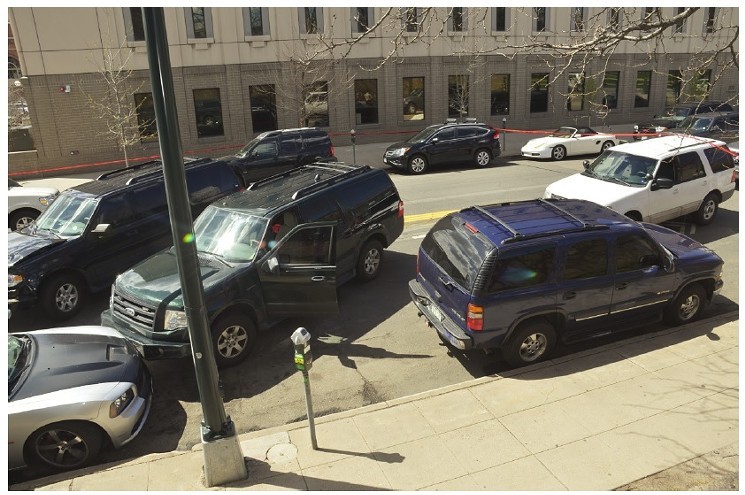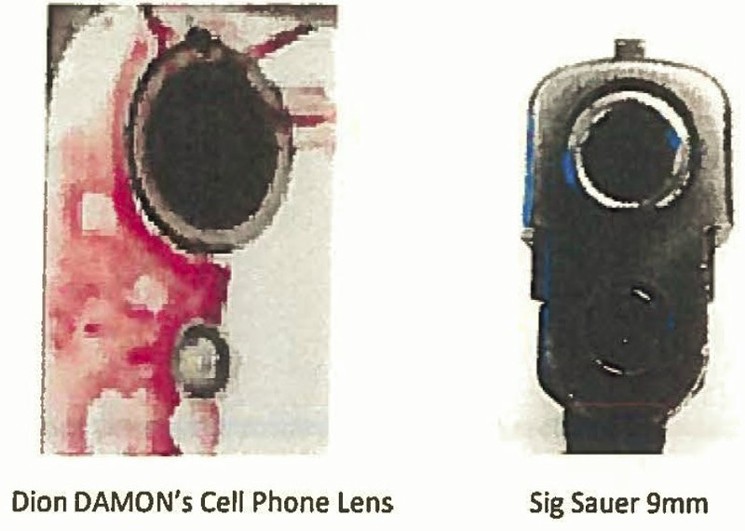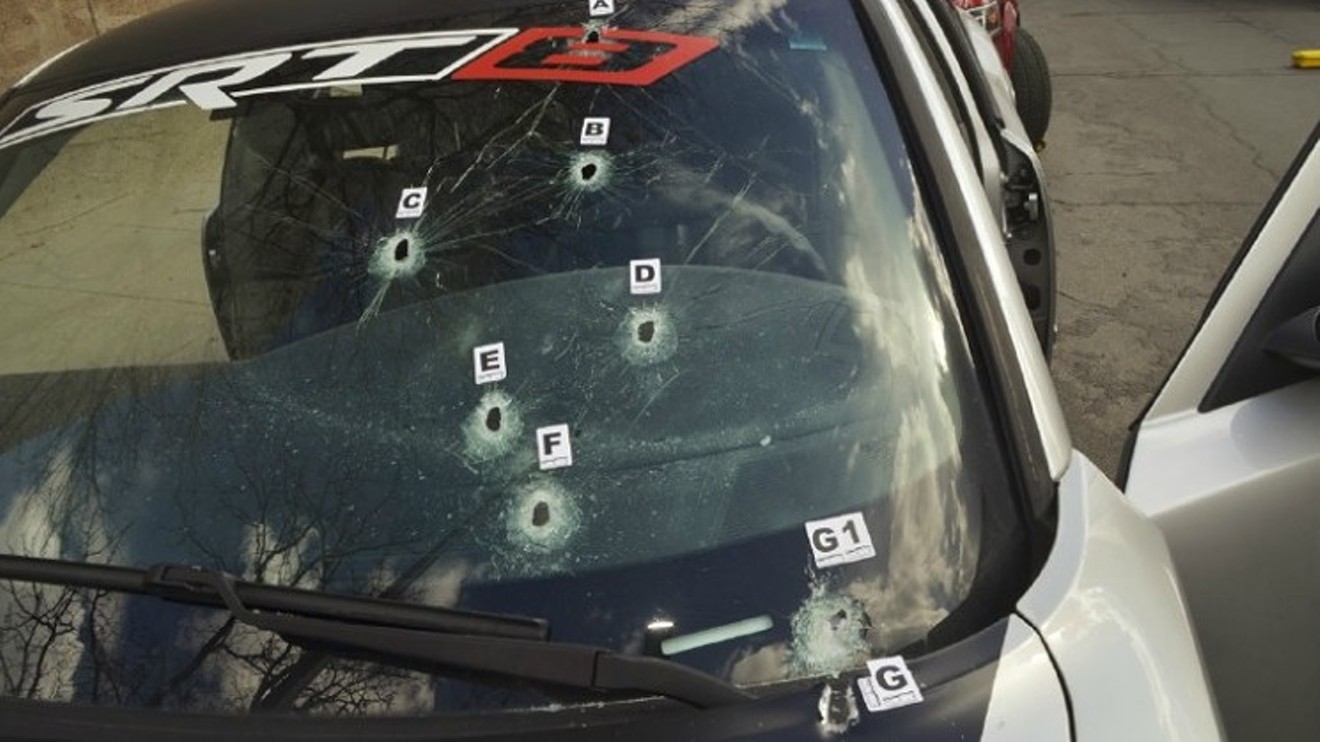"This is a case where police acted as judge, jury and executioner, which has been a national problem for some time now," notes attorney John Holland of Holland, Holland Edwards & Grossman. "In this case, it appears Denver went to a series of extreme measures in an attempt to exonerate an officer who shot an unarmed person. He shot and killed somebody who had no weapon and then he claimed he had one."
"The Denver Police Department has learned over the last two generations that it's basically immune from any prosecution or internal discipline in the event that it engages in excessive force," adds Darold Killmer, a partner in Killmer, Lane & Newman LLP. "I've never seen a municipality more protective of its own law enforcement officers when there's a complaint of excessive force — and it's a virtual certainty that the district attorney will not bring charges even if you kill an unarmed man like Dion Damon, who wasn't acting aggressively and wasn't trying to escape."
Indeed, then-Denver district attorney Mitch Morrissey found that Motz and the many other officers at the scene of the Damon shooting had done nothing wrong — and this wasn't unusual. The lawsuit points out that in the ten years prior to Damon's death, the Denver DA's office ruled that 71 out of 71 DPD shootings it investigated were legally justified. In December 2016, shortly before he left office, Morrissey defended himself against those who criticized him for never bringing criminal charges against police officers who shot and killed suspects by saying, "What I always tell people is, if you want to change our decisions on these, you have to change the law. You have to take away the right of self-defense. You have to change what an officer can do when confronted with force or deadly force. You have to change those things, because that's what we have to apply."
Morrissey's decision letter about the shooting is accessible below, along with the suit, which points out that shortly after 12:30 p.m. on April 12, 2016, Damon parked his car between 13th and 14th avenues on the east side of Bannock so that his wife, plaintiff Dawn Aguirre, could pay a ticket at the Denver City and County Building. After she and the couple's young son left the vehicle, members of the Rocky Mountain Safe Streets Task Force who had been tailing Damon because of his suspected involvement in a March 17, 2016, armed robbery at the Bank of Denver branch near Holly and Leetsdale converged on his Dodge Charger, blocking it in against the curb. "Mr. Damon could not, and did not try to, escape," the narrative maintains.
At that point, Officer Motz exited the truck in which he was traveling and pointed his gun at Damon from approximately ten feet away, the suit continues. He wasn't the only one; other officers pulled their weapons, too. But at least one returned to his vehicle to get what's characterized as "less-lethal aid," presumably because it was clear Damon was unarmed. Likewise, no one else fired in the minute or so before Motz unleashed his fusillade, and neither did anyone ever shout "Gun!," as is police protocol when a firearm is sighted. That included Motz.
In addition, Aguirre was standing nearby throughout the encounter and is said to have "yelled loudly and repeatedly that her husband was unarmed, and that if they let her talk with him, he would readily get out of the vehicle." And a bystander also heard Damon tell officers at the scene, "I'm unarmed."
Instead, the lawsuit states, "Defendant Motz reportedly gave commands for Mr. Damon to show him his hands. When Mr. Damon raised his hands as ordered, Defendant Motz shot Mr. Damon six or seven times, killing him. Ms. Aguirre watched her husband’s death from approximately twenty feet away."

This photo shows how members of the Rocky Mountain Safe Streets Task Force pinned Dion Damon's car against a curb.
Denver District Attorney's Office
In subsequent interviews, more than thirty law enforcers on the scene said they hadn't seen a gun. The sole exception was Motz, who insisted that he'd spotted "a black-and-silver-colored semi-auto in [Damon's] right hand. And it's starting to come toward me."
Motz and other officers had plenty of time to refine their memories according to the following timeline of the hours between the shooting and their respective interviews with investigators:
13:23 -13:47 — Mr. Olson met with Defendant Motz for 24 minutes;
13:50 -14:05 — Mr. Olson met with Technician Eberharter for 15 minutes;
14:30 -14:32 — Mr. Olson again met with Defendant Motz for 2 minutes;
14:32 -14:34 — Mr. Olson met with Technician Moen for 2 minutes;
14:40 -14:50 — Mr. Olson met with Technician Jones for 10 minutes;
14:45 -15:15 — Mr. Olson met with Technician Rembert for 30 minutes;
15:00 -15:10 — Mr. Olson met with Lieutenant Pine for 10 minutes;
15:02 — Technician Eberharter’s official interview began;
15:11 — Technician Moen’s official interview began;
15:23 — Technician Rembert’s official interview began;
16:00 -16:05 — Mr. Olson again met with Defendant Motz for 5 minutes;
16:30 — Technician Jones’ official interview began;
16:30 — Lieutenant Pine’s official interview began;
17:05 -18:05 — Defendant Motz’s official interview began, with Mr. Olson present.

During his post-shooting interview, Officer Jeffrey Motz can be seen demonstrating a two-handed stance while describing his fatal encounter with suspect Dion Damon.
Holland, Hoilland Edwards & Grossman/Killmer, Lane & Newman LLP
"He said the right hand thrust out," Holland says. "He was highly specific about it: 'I saw a gun in his right hand. He thrust it at me.' But then he immediately contradicted it."
When it became clear no gun was present, the lawsuit accuses DPD investigators of going out of their way to concoct a theory that Motz could have confused the white cell phone for a black-and-silver semi-automatic. A prime example was a photo juxtaposition that likened the camera's lens to the opening of a gun barrel — but to make the comparison believable, the former was significantly enlarged.
"Had the police investigators distorted and resized a picture of the entire phone in the same proportion as they used to resize the image of the camera lens alone, the resulting image of the entire phone would be approximately 6.8 times as long as the above gun image is tall and 4.9 times as wide as the gun image," the text allows. But in the end, "DA Mitch Morrissey relied on this obviously distorted white-phone-to-black-gun comparison to conclude: "Damon was the cause of the lethal outcome because he made the sudden threatening gesture pretending to point a gun at Motz."

The distorted comparison of a cell-phone lens and the barrel of a semi-automatic pistol.
Holland, Hoilland Edwards & Grossman/Killmer, Lane & Newman LLP
The DA's decision letter argues that "the location of the entrance wound shows that the outside of Damon’s forearm was facing Motz when it was struck. In other words, Damon’s palms were not facing Motz when he was shot," as they would be, presumably, if he'd been raising his hands in the traditional surrender motion. As such, "it is exactly the wound path one would expect if Damon was shot in the forearm while making the gesture with his hands that Motz described. This evidence strongly supports Motz’s credibility and the accuracy of his description of Damon’s gesture."
In contrast, the lawsuit states: "The autopsy’s findings are entirely consistent with Mr. Damon showing Defendant Motz his hands as ordered, placing his hands on the wheel or preparing to exit the car, raising his arms in front of his face after Defendant Motz’s gunfire commenced, being hit in his arm as he was collapsing from prior bullets, or other entirely benign explanations for why the bullets struck Mr. Damon the way that they did."
To attorney Killmer, Morrissey's theory is as dubious as the prospect floated by the DA that Damon may have been trying to commit "suicide by cop" even though his wife was in clear view. And he's offended by the post-mortem efforts to legitimize the shooting by shifting focus to heroin that was in Damon's system at the time of his death or the bank robbery, the investigation of which remains open to this day — perhaps to give the authorities an excuse not to turn over documents related to it, Killmer speculates.
"The City of Denver has a playbook they resort to immediately upon having killed someone — and their first shot across the bow is always how bad the person was who's been killed," he says. "The effort is to make the community not care that a human life has been extinguished at the hands of law enforcement — that they must have been bad people and deserved what they got, even though they were unarmed. It's a blame-the-victim mentality that's absolutely reprehensible."

Denver DA Mitch Morrissey used the bullet holes in Dion Damon's arm, as seen in this post-mortem photo, in his decision letter that found Officer Jeffrey Motz's actions justified.
Denver District Attorney's Office
In 2002, before any of these slayings, the lawsuit points out that Motz "sustained administrative charges of 'Failure to Shoot.'" To Killmer, "that kind of makes you wonder. You discipline employees so they learn a lesson and don't do something again, and Officer Motz hasn't been disciplined for failure to shoot since that — and neither has he been disciplined for shooting repeatedly."
Hence the lawsuit, whose importance goes beyond the facts of the case in Holland's opinion. "For some time in America, it seems, the Fourth Amendment has been on the run — and we are increasingly in a period in which police treat civilians as if they aren't even citizens. That's why the citizens of this country need to demand the protections of the Fourth Amendment and continuously protest the killings of unarmed people by people who are heavily armed — people called the police."
Click to read Estate of Dion Damon v. City and County of Denver and Jeffrey Motz and the 2016 Dion Damon decision letter.













